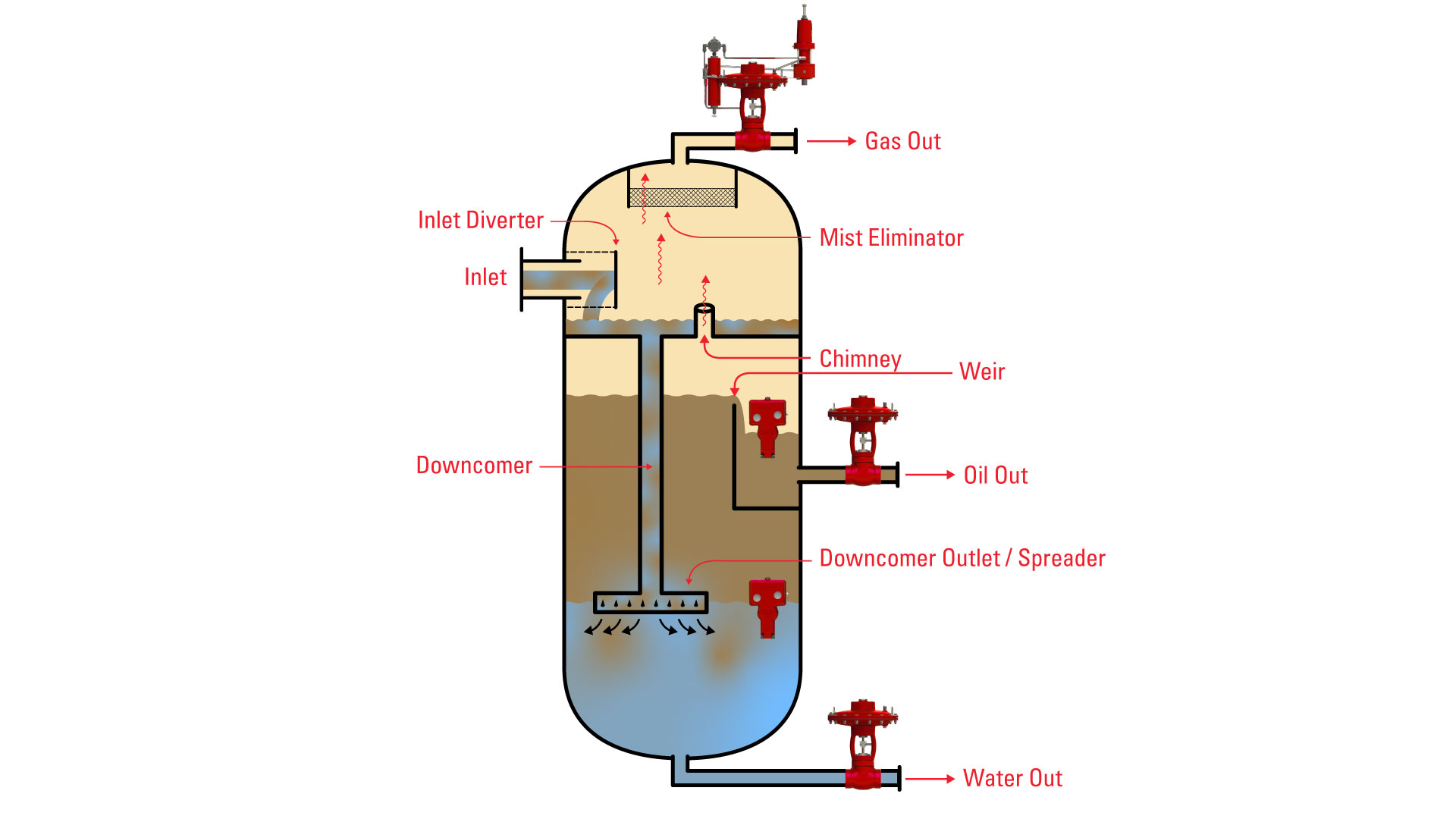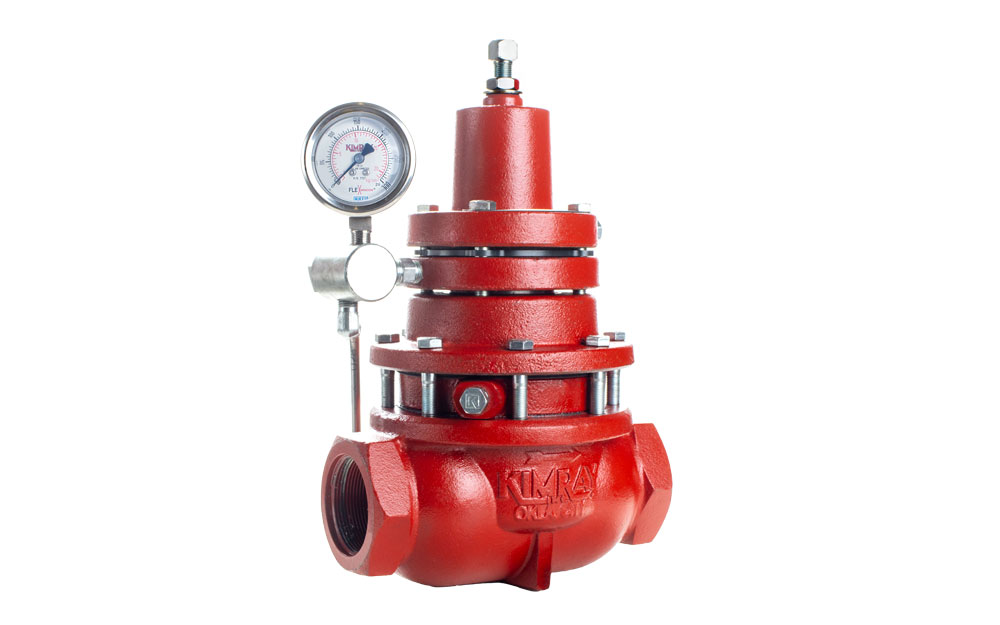
Produced well fluids consist of various amounts of oil, water, natural gas, and sediment. The first step in oil and gas production is to split the flow up into its individual components with a separator.
A three-phase separator uses gravity to separate produced well fluid into gas, oil, and water phases. Installation of these vessels occurs near the wellhead, and they come in horizontal and vertical configurations.
How does a Horizontal Three-Phase Separator Work?
In a horizontal three-phase separator, fluid enters the vessel through an inlet, and immediately hits an inlet diverter. This sudden impact provides the initial separation of liquid and vapor and begins the gas-oil separation process.
In the liquid collection section of the vessel, the oil and and emulsion separate, forming a layer (or “pad”) above the free water. A weir maintains the oil level, while an interface liquid level controller maintains the water level.

The oil spills over the top of the weir, and then a level controller, which operates the oil dump valve, controls its level.
An interface level controller also senses the height of the oil-water interface. This controller signals another dump valve to release as much water from the vessel as is needed to maintain the oil-water interface at the pre-determined height.
Meanwhile, gas rises to the top of the separator. It flows horizontally and exits through a mist extractor to a high pressure control valve, which maintains constant vessel pressure.
How does a Vertical Three-Phase Separator Work?
In a vertical three-phase separator, flow enters the vessel through a side inlet as well, and is immediately met by an inlet diverter. This impact begins the separation process.
A downcomer transmits the liquid through the oil-gas interface. A chimney equalizes gas pressure between the lower section and the gas section.

The “spreader,” or downcomer outlet, is located at the oil-water interface. As the oil rises from this point, any free water separates out from the oil phase. The water droplets flow down through the oil. As the water flows downward, oil droplets trapped in the water phase rise up through the water flow.
To learn more about separators, see our video 4 Types of Three-Phase Separator Design.





























